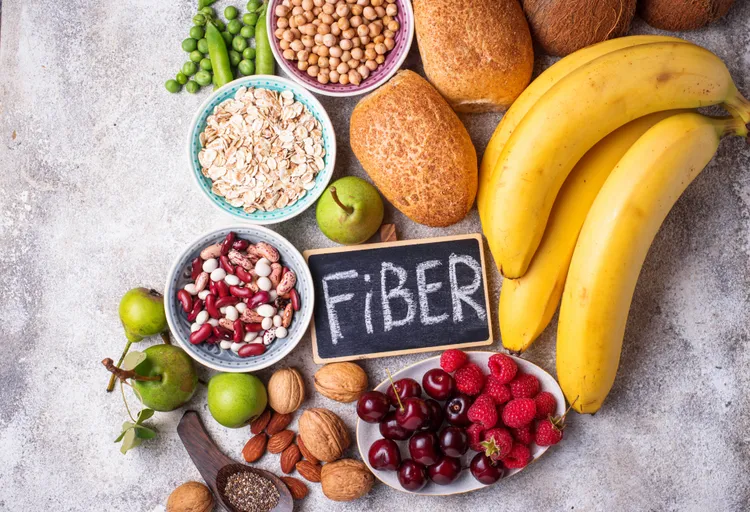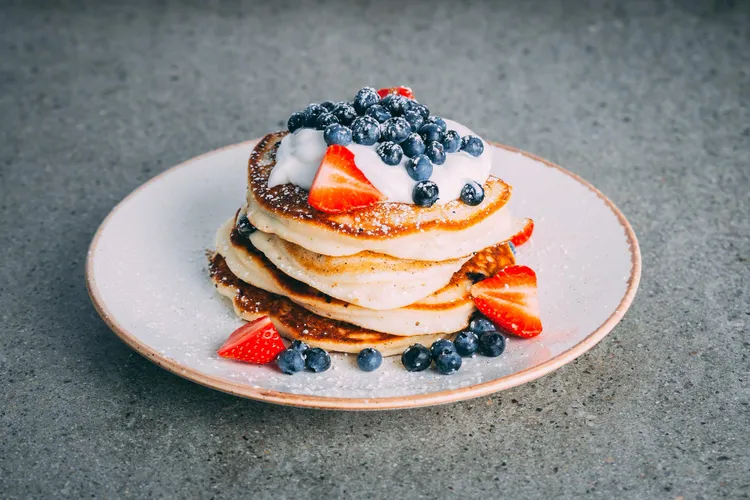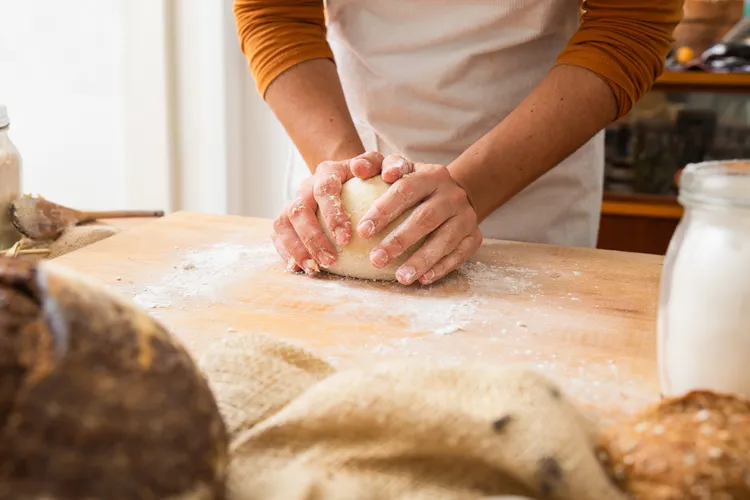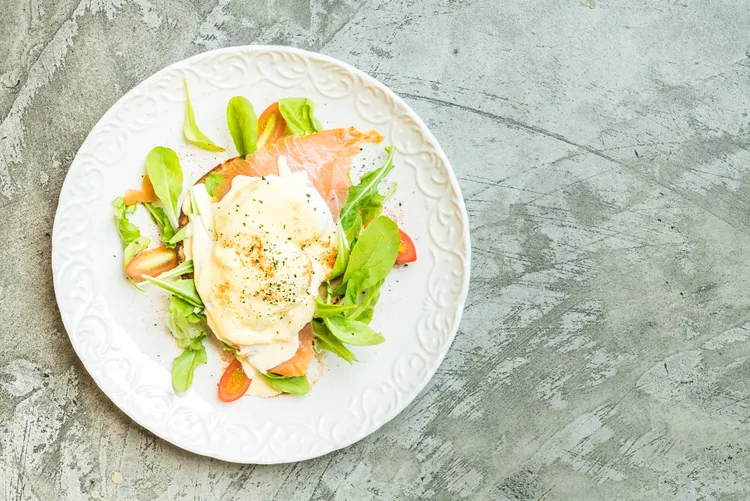The Role of Fiber: Why Your Meals Might Be Missing It
For something our bodies desperately need, fiber is surprisingly easy to overlook. It doesn’t have the trendy vibe of protein, it doesn’t get flashy labels like antioxidants, and it definitely doesn’t have the seductive glow of sugar or fats. Fiber is more like the quiet, dependable friend who supports you behind the scenes - keeping your digestion smooth, helping your energy stay steady, and even playing a role in long-term health outcomes like heart health and blood sugar control.

Yet most people barely get half the amount they need, and they often don’t realize that the way modern meals are built makes fiber the first thing to disappear from the plate.
And honestly, that’s where the story gets interesting. Because once you understand what fiber does, and why it’s missing, you start to notice it everywhere - or rather, the absence of it everywhere. You notice it in refined breads, in fast food, in snacks that crumble into dust, in sweet drinks that vanish quickly into the bloodstream. Fiber is the part of food that doesn’t break down right away, which means it’s not convenient for food processing, not flashy for marketing, and not “sexy” in the world of packaged goods. But inside your body, it’s doing critical work.
So let’s peel this back gently and talk about why fiber matters so much, why so many meals today fall short, and how you can make sure your plate is a whole lot more balanced - and honestly, more satisfying - without radically changing what you love to eat.
Most people think of fiber as just a thing that “helps with digestion,” which is true, but that description is kind of like saying your phone “makes calls” - it’s technically correct, but wildly incomplete. Fiber comes in two main types - soluble and insoluble - and each one plays a different role. Soluble fiber dissolves in water, forming a gel-like substance that slows digestion just enough to keep blood sugar steady and cholesterol in check. Insoluble fiber doesn’t dissolve; it adds bulk, keeps things moving, and supports a healthy gut environment. Together, they help your digestive system work in the smooth, rhythmic way it’s supposed to.
But beyond digestion, fiber influences things you wouldn’t expect. It helps you feel full naturally, without counting calories or overthinking portions. Foods high in fiber tend to be more satisfying, making overeating a lot less likely. Fiber also feeds the beneficial bacteria in your gut, which research links to everything from mood regulation to immunity. It acts like a gentle internal broom - cleaning, balancing, stabilizing - and most people go through life unknowingly depriving themselves of these benefits.
So why is fiber missing from so many meals? The short answer: convenience. The long answer: our food system slowly stripped it away in pursuit of shelf life, softness, and mass appeal.
Look at bread, for example. Whole grains naturally come with fiber because the bran and germ are intact. But when grains are refined - turned into white flour - the bran and germ are removed, taking fiber and nutrients with them. The result is soft, fluffy, shelf-stable bread that tastes good but leaves you hungry again in an hour. The same process happens with white rice, many cereals, most pastas, crackers, pastries, and pretty much anything made from refined flour.
In restaurants and fast food, fiber gets pushed aside even more. A typical burger meal? White bun, fries, maybe a slice of tomato if you’re lucky, plus a patty. Very little fiber. Breakfast sandwiches, pastries, pancakes, smoothies made without whole fruit, and grab-and-go snacks are usually low fiber too. The more processed and “convenient” a meal is, the more likely fiber got left behind in the production process.
Even people who think they’re eating healthy often fall short because they’re choosing foods that sound good but aren’t actually fiber-rich. Yogurt bowls with sugary granola, protein bars made mostly from syrups and powders, veggie chips that are basically starch, juices that remove the entire fibrous structure of fruit - you get the idea. Without fiber, even “healthy-looking” meals can spike your blood sugar and leave you hungry way too soon.
The average adult should be getting around 25 to 35 grams of fiber a day. Most people barely scrape together 10 to 15 grams. And the kicker? Your body notices. Low fiber often shows up as sluggish digestion, bloating, irregularity, afternoon energy crashes, frequent snacking, and feeling “never quite full.” Over time, low fiber can affect cholesterol, blood sugar regulation, and overall gut health. It’s subtle at first, but meaningful.
Here’s the part that surprises people the most: adding more fiber to your meals doesn’t have to mean massive dietary changes. You don’t have to become the person who eats only kale and quinoa bowls or carries chia seeds everywhere. Instead, it’s about gently weaving fiber back into meals you already like - stealthily, easily, and in ways your taste buds won’t complain about.
For example, if you love pasta (and honestly, who doesn’t?), simply reaching for whole wheat or legume-based pasta gives you a substantial fiber boost without changing your meal structure at all. Same with bread - whole grain bread with visible seeds or texture is a lot higher in fiber than the soft white stuff. You still get your sandwiches and toast; they just keep you full longer.
Adding beans to meals is one of the easiest fiber wins. Beans are honestly superheroes - high in fiber, high in protein, budget-friendly, and incredibly adaptable. Throw them into soups, stews, salads, burrito bowls, pasta dishes, or blend them into dips. A half-cup serving alone can deliver 6-8 grams of fiber.
Vegetables and fruits are another effortless way to boost fiber, especially when you think in terms of volume. A handful of berries, an apple with the skin on, a big scoop of roasted veggies, some leafy greens tossed onto your plate - each addition adds bulk and fiber without drastically altering your meal.
Even small swaps make a huge difference:
- Choosing brown rice or quinoa instead of white rice
- Adding flaxseed or chia seeds to yogurt, oatmeal, or smoothies
- Using lentils or chickpeas as part of your protein source
- Keeping the skins on potatoes when roasting them
- Snacking on nuts or popcorn instead of low-fiber chips
Over time, these little moves accumulate into meals that keep you fuller for longer, regulate digestion, and steady your energy levels. People often notice that when they increase fiber, cravings go down, portion sizes feel more intuitive, and meals stick with them. It’s not magic - it’s just how the body responds when it finally gets the nutrients it’s been missing.
One of the most interesting things about fiber is how it influences the gut microbiome. Your gut bacteria depend on fiber as their food source - particularly certain types known as prebiotic fibers. When you regularly feed these microbes, they produce compounds that help reduce inflammation, support the immune system, and even influence neurotransmitters connected to mood. It’s wild how much of your internal ecosystem depends on whether you ate an apple or skipped it.
But here’s something important: if you’ve been eating low fiber for a long time, suddenly jumping to a high-fiber diet can cause discomfort. Gas, bloating, and digestive discomfort often happen when the gut isn’t used to processing fiber. The key is increasing gradually - adding a bit more each week while drinking plenty of water. Fiber works best when it has hydration to help it move smoothly through the digestive system.
Over time, as your body adjusts, high-fiber meals feel amazing. They’re satisfying in a slow, steady way that highly processed foods just can’t replicate. You start noticing that you stay full longer, have more consistent energy, and - let’s be real - your digestion becomes much more predictable and comfortable.
Fiber doesn’t need hype; its benefits speak for themselves once you feel them. The real challenge is simply noticing where it’s missing and weaving it back in. And that doesn’t mean transforming your eating habits overnight or becoming someone you’re not. It just means being a bit more intentional: picking the bread with the seeds, throwing some broccoli on the plate, adding the beans, choosing whole grains when you can, keeping fruit nearby.
Think of fiber as the structural support system of your meals. It slows things down in a good way - your digestion, your hunger, your blood sugar swings - and it makes every part of your body’s internal chemistry feel a little more steady and supported.
So the next time you put together a meal and something feels like it’s “missing,” don’t just think about flavor, protein, fat, or color. Ask yourself whether fiber is part of the picture. Because when it is, that meal works harder for you. It leaves you energized instead of drained, satisfied instead of searching for more, and balanced instead of spiking and crashing.
Your meals might be missing fiber - but the moment you start adding it back in, things shift. And you don’t even have to try that hard. The smallest changes sometimes make the biggest difference.









